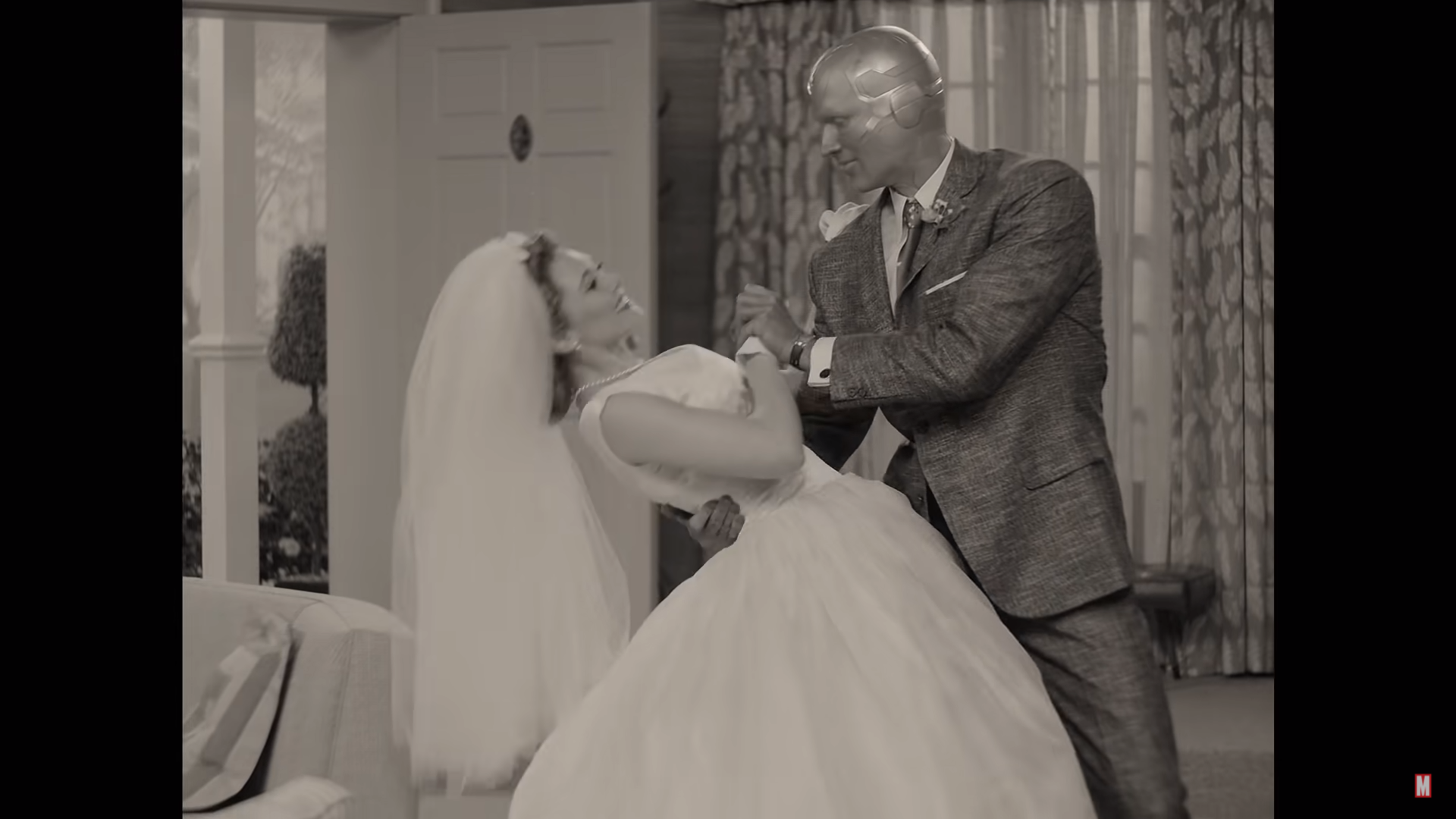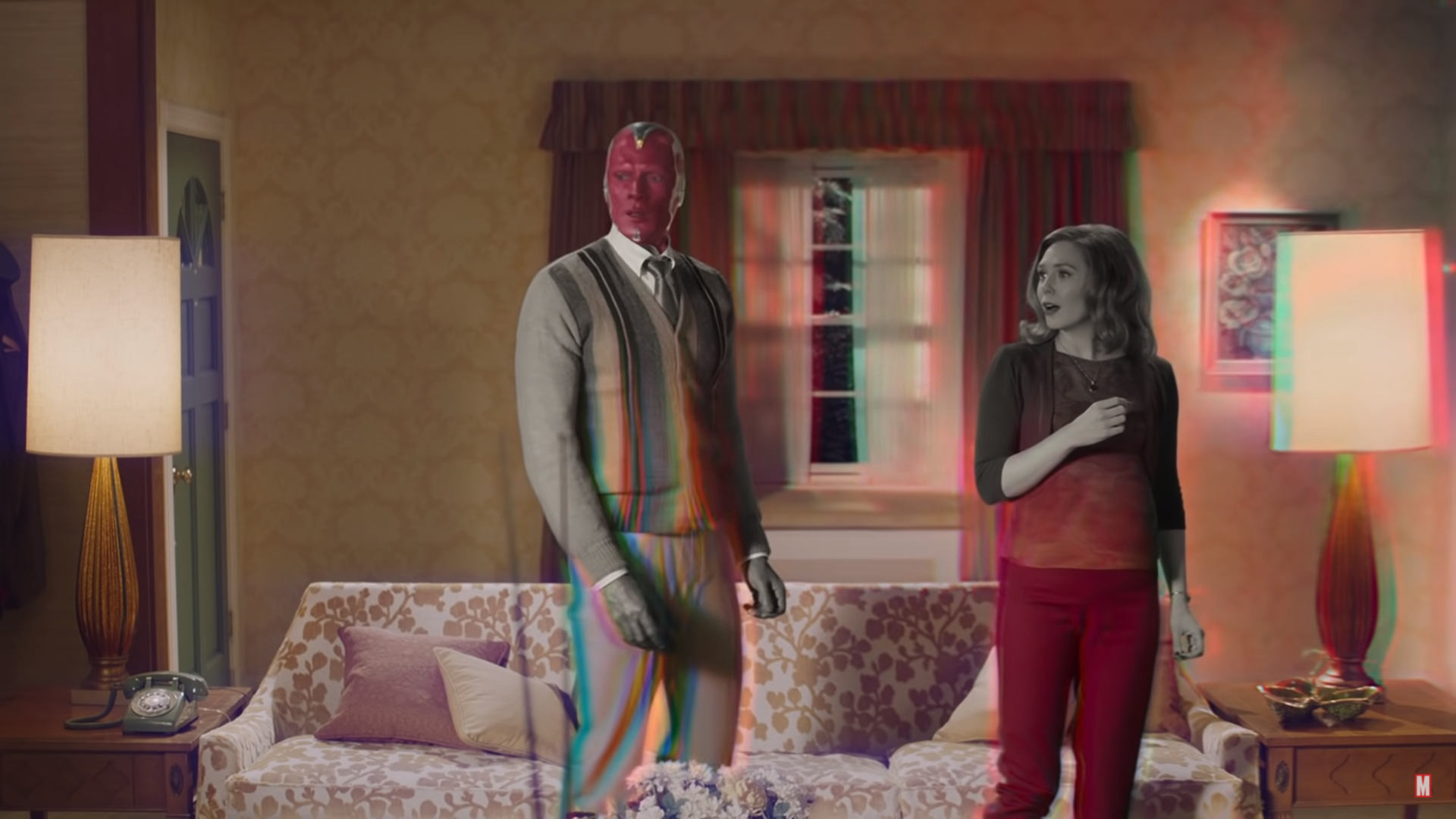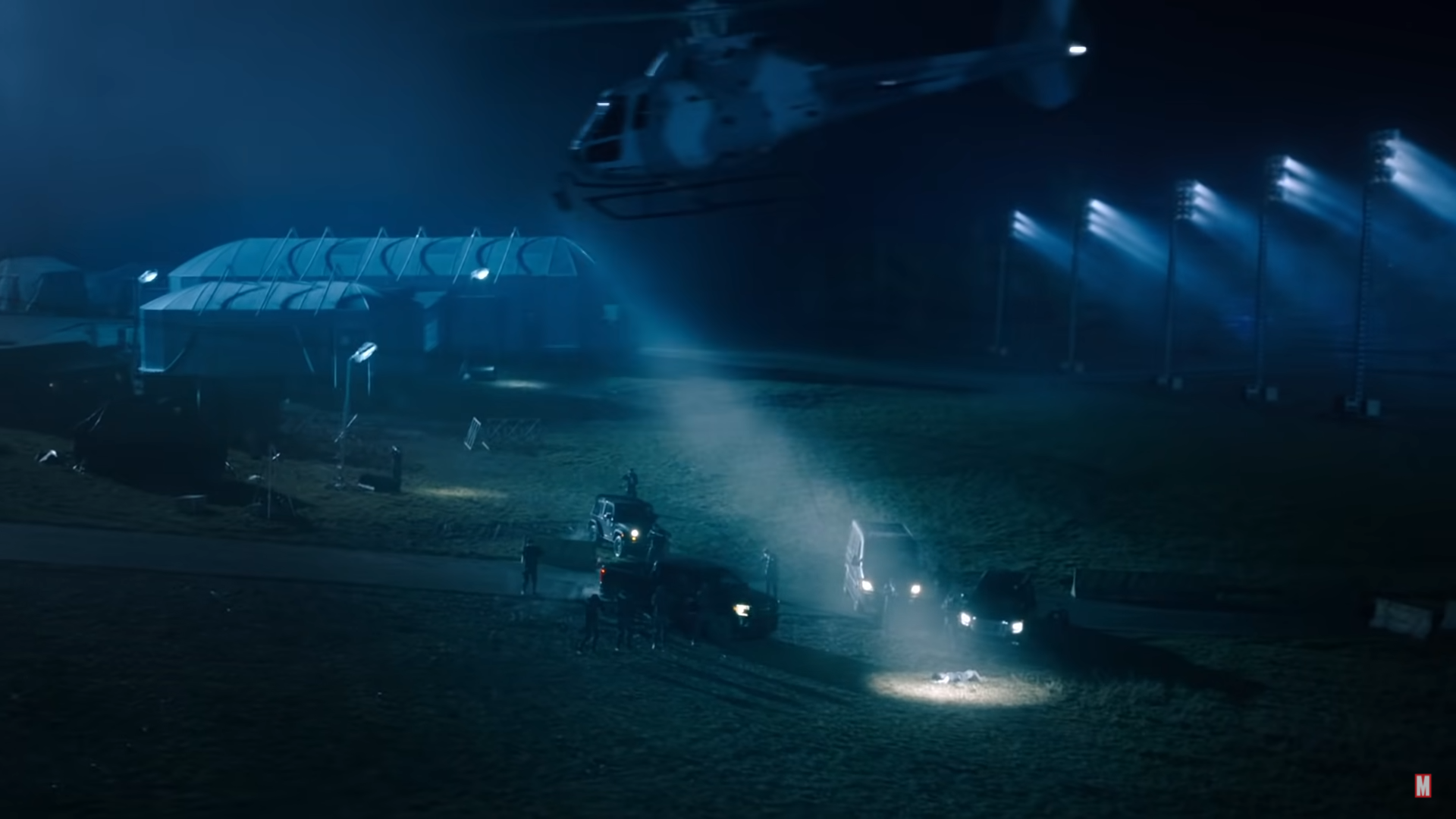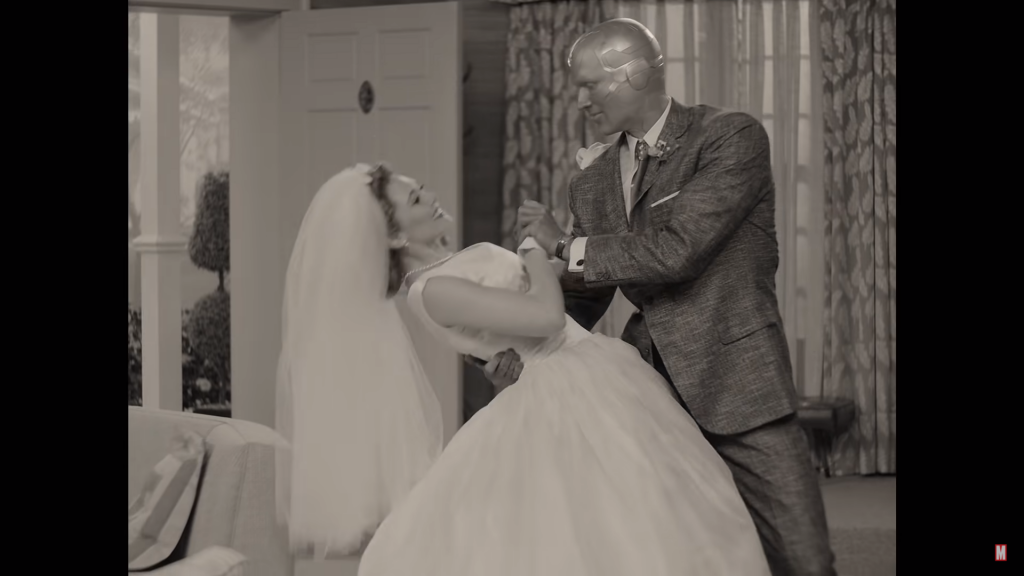WandaVision is a Disney+ miniseries written and created by Jac Schaeffer and directed by Matt Shakman. The series is set in the Marvel Cinematic Universe, occurring after the events of the franchise’s latest film, Avengers: Endgame.
Elizabeth Olsen and Paul Bettany play the titual characters Wanda Maximoff and Vision, respectively. Also starring are Kat Dennings as Darcy Lewis, Kathryn Hahn as Agatha Harkness, Evan Peters as Ralph Bohner, Randall Park as Jimmy Woo, and Teyonah Parris as Monica Rambeau.
Being part of the MCU may discourage some viewers from giving the series a try if they hadn’t seen the 20-ish Marvel movies leading up to this part of the story, but fret not, for this series is a perfectly enjoyable watch all on its own. In fact, the first half of the series’ episodes barely touch on the goings-on of the other Marvel movies. The only thing that may confuse the viewer who hasn’t been keeping up with the MCU are the fantastical abilities of the two main characters. For their convenience, I will very briefly describe who they are and why they have their powers in the following paragraph, which long-time MCU fans can freely skip.
Wanda Maximoff is a native of Sokovia, a fictional European country that’s prominently featured in the film Avengers: Age of Ultron. She grew up there with her twin brother Pietro, and the two of them took part in secret experiments organized by HYDRA, a sinister organization that’s keen on taking control of the world, as they do. These experiments gave them their powers, with Wanda being able to move objects telekinetically and throw orbs of energy at enemy things, while Pietro attained superhuman speed. The true origins and full scale of Wanda’s powers aren’t actually addressed prior to this series. Vision is a robot made of the nigh-indestructible material called vibranium, but also of synthethic, organic-like materials, which is why he is sometimes called a synthezoid. He was given life by a magical stone embedded in his forehead, which also gave him the power to change his appearance, move through objects like a ghost, and create powerful beams of energy. He doesn’t need to eat or sleep, but he’s otherwise very human-like.
With that out of the way, let’s talk about the show itself. Comprising of nine episodes in total, the first season’s nearly six hours long. The most shocking thing about it is its format. The first two episodes are black and white, and their aspect ratio is 4:3. The episodes also feature a laugh track. This is because they’re intentionally meant to emulate sitcoms of the last half of the previous century. During these episodes, color is sometimes used to emphasize something that’s out of place in the scene, setting up anticipation that will eventually turn into the series’ primary plot. Naming every individual sitcom reference would likely result in a text the length of WandaVision’s script as every episode is filled to the brim with references, so I will concentrate on the few that struck me the most.

The first two episodes are full-on sitcoms made in 50’s and 60’s sitcom style. They’re highly reminiscent of “The Dick Van Dyke Show”, which isn’t that strange considering that Dick Van Dyke was consulted during the making of these episodes. The costume design and the visual effects employed feels nostalgic in the best sense, and the episodes’ writing makes them highly enjoyable for any fan of the sitcoms of old. The use of the main characters’ powers gives the episodes even more charm, and a good laugh for fans of the MCU.
The second episode’s ending has a dramatic scene during which color appears, emulating an old episode of the sitcom “I Dream of Jeannie” that had the same effect. Yet the episodes also have different intros that reference various shows. For instance, the second episode’s cartoon style intro references “Bewitched”, which is particularly funny as Wanda’s powers are similar to the sitcom’s main character, who is a witch. Later episodes also reference “Charmed”, another show with witches in it. The third episode, titled “Now in Color”, ditches the black and white aesthetic, and every episode afterwards uses a modern aspect ratio. While WandaVision feels like an actual sitcom during these episodes, it could also be said that it makes fun of the common tropes and rigorous formats that were used in almost all television back in the day.

Episode 6 was particularly fun for me as it was made in the style of “Malcolm In The Middle”. My generation grew up on this sitcom, and seeing it translated into WandaVision, from its chaotic intro to all the camera movements and framings throughout the episode, was an absolute treat. Seeing the characters speak into the camera while the world goes on behind them somehow felt completely natural, despite it being present only for this episode.
Each episode jumps about a decade ahead in terms of historical sitcom style, eventually reaching the latest comedy shows. Episode 7 emulates Modern Family. Viewers are treated to the intimate interviews of characters, who comment on various goings-on in the episode while seated on a couch, removed from the action. The writing is now focused on portraying the imperfect nature of the characters, instead of the image of the idealized family of the 50’s and 60’s. The camera follows suite, shaking slightly and making sudden zooms, which will surely make any fan of that series feel right at home.

While its many sitcom references give the show a unique intrinsic quality, the question remains, is the MCU part of the WandaVision story any good? And the best answer I can give you is “depends”. The issue is, if you’ve come to this show expecting a pure Marvel experience, you may come out of it thinking its pacing was too slow or that it has a very slow start. However, the show is also riddled with references to Marvel movies and comics, with some fan-favorite characters appearing for the first time on-screen, and others reprising their roles. The later episodes also delve deep into Wanda’s origin story and Wanda’s and Vision’s relationship, something that the movies failed to do. This was the first time I felt real sympathy or interest for either of the titular characters, and the show’s finale is both nerve-wrecking and heart-breaking.
Therefore, I can recommend this show to anyone who is, like me, a fan of sitcoms of old and new. And for the Marvel fans, watching the show is likely to be a necessity, because it sets up events and characters for future films, and in true Marvel fashion, features multiple post-credit scenes.
If you think you may have missed something, please click on the button below to find out all about your favorite movie or series.

